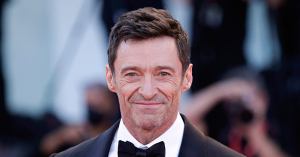Thousands of fans have already gone out to see Disney’s Lion King remake, but only the most die-hard among them will have caught all of the big discrepancies between it and the original. Disney has had fans anxiously awaiting its new take on Lion King for years now, and now that it is here, there are plenty of changes and additions to dissect.
The Lion King first came out in 1994 and almost instantly landed among the animated classics. The movie starred Matthew Broderick, and featured an A-list cast including Jeremy Irons, James Earl Jones, Nathan Lane and Whoopi Goldberg, among many others.
Videos by PopCulture.com
The remake carries on this tradition with a cast list that might seem more at home in a drama with Oscar aspirations. It has Donald Glover in the starring role, with a cast including Keegan-Michael Key, Seth Rogen, Billy Eichner and John Oliver, to name a few. Beyoncé even made a rare movie appearance here, complete with an original song, and some original cast members like James Earl Jones returned.
In many ways, The Lion King is the nostalgia trip critics predicted it would be. The movie is done in photo-realistic CGI so good that it appears to be live action at times, but beyond that the story, script and songs are remarkably similar.
Still, where there are changes they stand out all the more, and many fans are picking apart the differences between the two movies and trying to decide which ones work best. Here is a break-down of the major changes from The Lion King (1994) to The Lion King (2019).
29 Extra Minutes

First and foremost, it is worth noting that the remake is a full 29 minutes longer in runtime than the original. That is where most of the additions fit in, as little was left out from the original.
While many fans may feel like more is better in the case of a childhood favorite, some are not so keen on this extended run-time. The original movie was already pushing the limits of most small children’s attention spans, and they are ostensibly still this movie’s target audience. Hopefully, the content of that half-hour is enough to make fans forgive and indulge the filmmakers on this.
Rafiki’s Staff
The first noticeable change from the original comes in the opening sequence, as if to warn fans that they may not recognize every single shot in the film. Rafiki, the baboon who serves the crown and dispenses wisdom, does not carry his iconic walking staff from the original movie.
This has its effect in one of the first scenes, as it means Rafiki does not have fruit on hand to paint a red streak on Simba’s forehead. Instead, he carries a handful of roots and twigs for this purpose. Later on, the staff’s absence is even more prominent as Rafiki does not have it on hand to whack some sense into Simba in his hour of need.
Family History

The new movie adds depth to the back story of The Lion King in many ways, including the complicated history between Mufasa and his grasping brother, Scar. In a new scene, Scar implies that it was Mufasa who gave him the distinctive face scar that became his name. This apparently came during a struggle for the throne, and Scar laments that Mufasa’s “brute strength” won the day.
Later on, it is also hinted that Scar and Mufasa were rivals for Sarabi’s love. There is also a fresh emphasis on Sarabi rebuffing Scar’s advances after her husband’s death, leaving him continually frustrated even once he has the power.
Simba Symbol
One change that some fans are bemoaning as needlessly complicated is the drawing of Simba Rafiki does on the trunk of his tree. While it was etched in some kind of sap or fruit juice in the original, here he gathers up a handful of bugs and arranges them on the trunk. Somehow, these bugs know to scratch out the image of Simba, which Rafiki then blows dust over to preserve it.
Hyenas
I personally felt really empowered by The Lion King (2019)’s decision to change Shenzi Hyena from a comic relief evil sidekick to a joyless evil girlboss with 3 lines of dialogue and such poor leadership skills that she almost wiped out the entire savannah by eating too much
— Jenny Nicholson (@JennyENicholson) July 23, 2019
In the original movie, Scar’s alliance with the hyenas is a given from the beginning. Here it takes a bit more negotiating to work out, as Scar persuades his henchmen to join him with an ominous rendition of “Be Prepared.”
This is a relatively innocuous change, though it does make Scar seem a bit bolder. It also makes it less sympathetic when he falls to the hyenas at the end of the movie.
The hyenas themselves were also renamed this time around, for reasons that are not totally clear. One of them, Shenzi (Florence Kasumba), retains his original name, but the other two were renamed as Kamari (Keegan-Michael Key) and Azizi (Eric Andre).
Stampede
Believe it or not, the stampede scene in The Lion King remake might be even more heartbreaking than it was in the original. At first, the action seems to be a shot-for-shot remake, albeit much more harrowing in the new CGI style. The only discernible difference is Scar telling Zazu to go for help rather than knocking him out.
Simba’s escape takes a different turn, however. He falls much further in the newer version and crawls away to avoid the hyenas. There are no prickly vines to break his fall this time — perhaps to avoid rendering realistic blood.
Nala
The new version adds a lot for Nala, the young lioness that becomes Simba’s queen. It’s no surprise, as she is played by Beyoncé, so the studio likely wanted to make sure they did not waste an opportunity.
From the start, this version of Nala is more commanding and authoritative, mirroring the matriarchal structure of real lion prides. As Scar takes over Pride Rock, Nala escapes rather than live under his thumb. To secure his rule, Scar even tries to force Nala to marry him, though she refuses. In his fury, the new king banishes her.
This means that while Simba is out doing his “Hakuna Matata” montage, she is having a harrowing adventure of her own. She finally finds the rightful king and forces him to return with her. On this travel montage, Beyoncé’s new original song for the movie, “Spirit,” plays.
Pumbaa’s Tragedy

In the raucous dance number “Hakuna Matata,” one word finally slips out that went unspoken in the original: “farted.” At the crux of the song, Pumbaa belts out loud and proud the reason he “got downhearted,” and Timon does not interrupt him. Even Pumbaa is surprised, asking his friend why he didn’t stop him.
“You disgust me,” the meerkat says.
Simba the Vegetarian
The remake puts an emphasis on one of the stories more confusing aspects as well — Simba’s bug-based diet. While living his carefree life with Timon and Pumbaa, the lion subsists on bugs. The remake takes this even further, giving Simba a reputation for vegetarianism through the jungle and inserting an awkward scene with a grateful antelope.
This raises some practical questions about the lion’s health and development. Without his typical diet of meat, it is not clear how he became a strong enough predator to face his uncle in the end. Still, this is a small and forgivable plot hole at the end of the day.
Far-Travelling Fur
Why is no one talking about that #LionKing scene with the fur and the poop? pic.twitter.com/Q5m5ArRBWF
— Always Remember Us This Gay (@xtopher13) July 22, 2019
Finally, one change that has baffled a few viewers is the fortuitous clump of fur that makes its way to Rafiki, revealing to him that Simba is still alive out there. While in the original it drifts over on a Saharan breeze, in this one it takes a much longer journey.
The remake follows the clump of fur through the wind to a bird’s nest, where it is used temporarily. From there it goes into the mouth of a giraffe, where it literally gets digested. A dung beetle then carries it from there, until a sandstorm whisks it away to the care of an ant. That ant the brings the fur to Rafiki, who somehow still recognizes it as Simba’s.
The Lion King may be one of Disney’s most faithful adaptations yet, but it still stands on its own as a unique movie. It is playing in theaters everywhere now.




